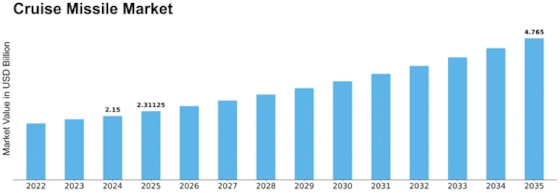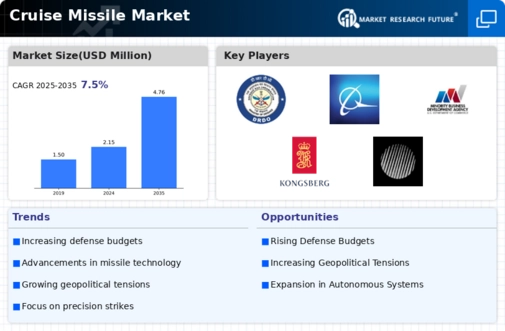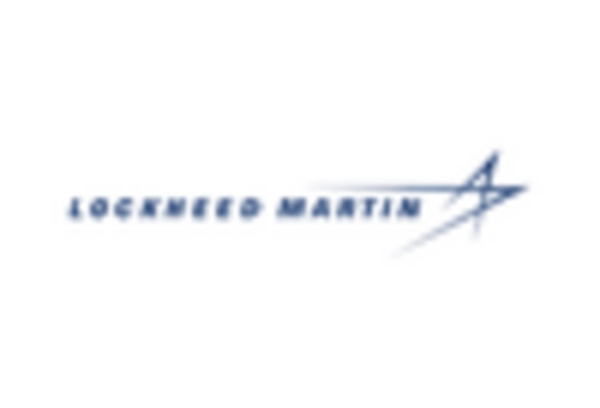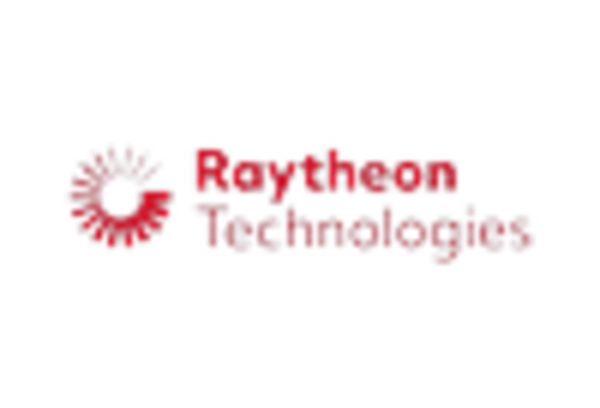Cruise Missile Size
Cruise Missile Market Growth Projections and Opportunities
The cruise missile market is influenced by several significant factors that shape its growth and development. Cruise missiles are precision-guided weapons capable of delivering high-precision strikes against land and maritime targets with accuracy and lethality. One of the primary drivers of the cruise missile market is the increasing geopolitical tensions and security threats worldwide, which have led to a growing demand for advanced military capabilities to deter potential adversaries and safeguard national security interests. As nations seek to enhance their defense capabilities and maintain strategic deterrence, there is a rising need for cruise missiles that offer long-range precision strike capabilities, stealth features, and advanced guidance systems to counter emerging threats effectively.
Moreover, advancements in missile technology, including improvements in propulsion systems, guidance and navigation systems, and stealth technology, have led to innovations in cruise missile systems, driving further adoption across defense forces globally. New generations of cruise missiles offer features such as increased range, improved accuracy, reduced radar cross-section, and enhanced survivability, enabling military forces to conduct precise and effective strikes against high-value targets in contested environments. This drives demand for cruise missile systems that offer superior performance, reliability, and mission flexibility to meet the evolving needs of modern warfare and asymmetric threats.
Furthermore, the growing emphasis on maritime power projection and anti-access/area denial (A2/AD) capabilities is driving investment and innovation in cruise missiles designed for naval warfare and littoral operations. Naval cruise missiles provide naval forces with the capability to strike enemy ships, ports, and coastal targets from standoff distances, enabling them to project power and influence in maritime theaters of operation. Anti-ship cruise missiles (ASCMs) equipped with advanced seeker technologies, stealth features, and multiple engagement modes enable naval forces to engage and neutralize enemy surface vessels and naval assets, enhancing maritime superiority and deterrence capabilities.
Additionally, the increasing focus on integrated air and missile defense (IAMD) systems and layered defense architectures is driving demand for cruise missiles with advanced countermeasures and penetration capabilities to defeat enemy air defenses and target complex and hardened installations. Long-range standoff cruise missiles equipped with stealth features, electronic countermeasures (ECM), and low-altitude penetration capabilities enable military forces to overcome enemy air defense systems and strike high-value targets deep inside adversary territory with reduced risk to aircraft and personnel. This creates opportunities for cruise missile manufacturers to develop specialized solutions that offer advanced penetration capabilities and survivability features to counter sophisticated air defense threats effectively.
Moreover, the proliferation of cruise missile technology and the increasing availability of off-the-shelf solutions from international suppliers are driving growth in the global cruise missile market. As countries seek to modernize their defense capabilities and acquire advanced weapons systems, there is a growing demand for cruise missiles that offer cost-effectiveness, interoperability, and compatibility with existing defense systems and platforms. This drives competition among cruise missile manufacturers to develop affordable, exportable solutions that meet the needs of a diverse range of end-users and address emerging security challenges in various regions around the world.


















Leave a Comment